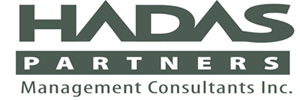Employee retention is a key component of a Merger and Acquisition (M&A) integration. And employee retention can be a company’s biggest hurdle to realize the expected return on investment (ROI).
The main reason for this is that financial models don’t fully capture the full costs of M&A integration. This became very clear to me early on in my career when I was involved in this work with Ernst & Young, the firm I stared my career with.
There are two very good reasons why M&A financial models underestimate the costs of integration.
- There is a built-in conflict of interest for companies bidding to win M&A advisory work
- Financial modellers use assumptions when calculating M&A costs
Built-in conflict of interest
There is an inherent conflict of interest when bidding for M&A advisory work. Winning this work depends on showing a favorable cost business case. If the cost of integration factored in some worst-case, or even just moderate-to-bad case scenarios, the business case could look much worse. Any potential client contemplating an acquisition would likely rethink their strategy, and many M&A activities would be abandoned. That’s not great for firms bidding on that work.
This is the same reason why home renovations almost always go over budget: if your contractor factored in the costs that he is pretty sure you are going to encounter, many people would reconsider doing their renovation. If you are a contractor, that’s not good for your business.
As a result, with M&A initiatives, as with home renovations, once you get started, well, then you have to finish, regardless of the additional costs.
When you assume, you make an…
 The second reason has to do with the mindset of individuals doing financial projections. In this way financial modellers are similar to economists. It’s like that joke about three guys being on a deserted island with a big cache of canned goods left over from some prior conflict. Unfortunately, being stranded, nobody has a can opener.
The second reason has to do with the mindset of individuals doing financial projections. In this way financial modellers are similar to economists. It’s like that joke about three guys being on a deserted island with a big cache of canned goods left over from some prior conflict. Unfortunately, being stranded, nobody has a can opener.
The three guys are a mechanic, an engineer, and an economist. The mechanic gets right to work and after a short while sharpens rocks that can be used to open cans. The engineer takes a bit more time and designs an elaborate rock and wooden stick contraption that also opens cans, and more efficiently. The economist holds up a can, looks at it, and says, “Assume a can opener”.
That mindset goes into developing an M&A business case. When calculating the ROI, financial modellers hold up their spreadsheets and say, “Assume the integration goes smoothly”. Which, of course, never, ever happens. This, of course, leads to cost overruns.
A caveat
Just to make clear, the comments above are in no way a criticism of the financial modelling profession (or contractors, or economists). I have worked with many highly ethical finance professionals who have guided their clients well. That often meant having clients understand their risks even when it meant risking winning the work for themselves.
The main point is that the reasons mentioned, conflict of interest and assumptions, are inherent and unavoidable. One can say something similar about any profession. But as a client of these services it is good to keep these reasons in mind when planning an M&A.
Don’t abandon hope
All is not lost, however, if you understand where your biggest cost risks lie. Integrating the people, processes, and cultures contain your biggest areas of risk. And one of the biggest areas within that is employee retention.
To understand why, you first have to understand that you have a diverse pool of employees and managers in both organizations that you can roughly assign to three different groups.
- The first are your stars or top performers.
- Then second group are your solid middle performers, who are also usually your “culture carriers”.
- Finally, the third group is everyone else.
High performers equal high flight risk
 As soon as you announce an M&A, you create uncertainty. That just is, and cannot be helped.
As soon as you announce an M&A, you create uncertainty. That just is, and cannot be helped.
Once you create uncertainty, you also create job anxiety. Many of your employees will begin to dust off their resumes, contact people in their network, and scan for opportunities more actively. That also is reality, and there is not much you can do to prevent that either.
Of your three groups of employees, the most likely to begin scanning the job market right away is the top performer group. Unfortunately, they are also most likely get an offer, and relatively quickly. In addition, since your top performers are now also working remotely, applying, interviewing and landing a job is much easier. The likelihood of them leaving, and quickly, is high.
Here is something else to consider. Not only is it bad to lose a superstar. It can get much worse if they are hired by a direct competitor of yours. In this case you lose twice: first you lose them, second they are working actively against you.
The low cost of employee retention for high performers
In one of the companies where we were dealing with this situation, our client was very concerned about losing their top talent. However, they were just as concerned about potentially high the costs of keeping their most valuable (read: expensive) employees. It turned out that retaining top talent was the least costly component of the retention plan we developed.
The reason for this is simple. Your stars likely enjoy working where they are. They probably have high job satisfaction and are reasonably content with their salaries (for now). In other words, financial incentives are not what they are looking for. They are looking for reassurances that they can continue enjoying what they do already.
As a matter of fact, being highly motivated achievers, they would probably be excited by the opportunity to participate in the M&A integration. They would want to contribute to making it successful.
So, what they are really hungry for is reassurance! In the case of our client, the retention activity consisted of a 30 minute conversation with each star employee. Each one was basically told, “Whatever you may here about potential job losses as part of this initiative does not apply to you. We’ve identified you as someone we want to keep and grow with. Barring an unexpected external catastrophe, we don’t want you to go anywhere.” That was it. Free. And it worked like a charm.
The high risk and cost of losing institutional knowledge
The next big risk is loss of critical institutional skills and knowledge. What does that mean though?
Here is one example. You have some good, loyal employees that have been around for a while. They know “how things are really done around here”. They have the relationships and goodwill to get things unstuck.
Their institutional knowledge consists of long-term relationships, which could be within your organization, but also with your vendors and clients. It could be your warehouse manager who knows their counterparts in your vendors’ or clients’ supply chain organizations.
These individuals solve many of your small problems continuously, deep down in your organization. Very likely you have no idea how valuable they are, or the full cost of losing them, until you do. And by then it’s too late, of course.
Another example is an individual who knows how a particular application works, and how to fix it when it freezes up or crashes. Most procedures for smaller applications are not documented, or are very out of date. If that application is important, and that employee is no longer around, it likely spells trouble.
Yet another example is an employee who understands how a particular business works. They understand what motivates customers, or they really understand what drives the profit margin in a particular market segment or subsegment.
The high employee retention price of cutting costs
How costly can it be to get rid of one of these individuals prematurely? Here is a real life situation that one of our clients experienced. This was the reason they hired us the next time they went through a big change project.
Our client (before we got involved) had a category manager who had been with the company for many years. He built up a database of contacts, truck routes, warehouses and so on that he used to keep things flowing. Over the years this individual built up a binder of this information for themselves and became a very effective and highly regarded employee.
Because he was also a team player, he shared this binder with his fellow category managers. As a result the whole team became very competitive in the industry. This category manager was well compensated as a result.
Then the organization decided to restructure and went through a cost cutting exercise. It was a typical accounting initiative which found that this category manager was “red-lined”, meaning paid excessively. The decision was made that to cut costs, he would be terminated.
Personal risk mitigation
This individual had a sense that he was at risk, which is very common. Most people have a gut feel for these situations when it comes to their job. To protect himself, he took the binder home the day before a scheduled meeting with his manager.
His instincts proved correct. The meeting was a termination meeting, and he received his package. He cleared out his desk and went home.
Later that morning, the rest of the category managers had a problem with one of the deliveries and needed the binder. Then there was another issue. Soon after that, another. The team suddenly became aware of how dependent they were on this binder to do their jobs. They became desperate to find the binder.
Trucks with cargo worth thousands of dollars were quite literally parked on the sides of roads waiting for instructions. Complaints from customers and vendors began trickling into the office. The issue quickly escalated all the way up to the CEO.
The rest of the category manager team assumed their colleague had taken the binder with him. However, being colleagues and friends, none of them were willing to call their buddy. In fact, they were pretty upset with what happened to him and were secretly cheering him on.
Scrambling an response
An emergency executive meeting was called, and management realized the predicament they put themselves in. In soccer terms, this was an own goal in a championship game in extra time. It was the CEO who decided to reach out to the terminated employee, who was now in a very, very enviable negotiating position.
Being street smart and a survivor, this former category manager leveraged that to the hilt. Initially the CEO tried a few threats that fell completely flat. Eventually, the CEO had no choice and asked, “OK, what do you want?” The employee got everything he asked for: a salary increase with essentially ‘tenure’ all the way through his pension. All legal and in writing.
Now, you may be aghast, and argue that this employee was unethical. And, you may have a point. However, if you were in charge of this company, and accountable for the cost cutting exercise that could have lost your company millions in dollars as well as key customers, I would bet You would do exactly what this CEO did: settle quickly and ensure you never put yourself in a similar situation again.
Your own job, and perhaps your entire career, could well be on the line. Plus, you put yourself in this predicament all by your lonesome. You have nobody but yourself to blame. Basically, you didn’t stop to properly assess the risk of losing institutional knowledge.
You may wonder how I know the details of this situation so well. Considering how embarrassing this episode was, you could assume that most people would have wanted to keep it very hush-hush. Well, the category manager in question was a key stakeholder on the project I was on. Once we established a good working relationship, he gleefully shared all of the details.
The big rewards of a good employee retention decision
 Here is a good news retention plan story. I am sure all of us have read about an acquirer who buys a company because it has an edge in a particular market. The reason for the company’s edge is that key employees really understand that market: what drives customer motivation, what impacts costs, and how to strike a balance for maximum market share and profits.
Here is a good news retention plan story. I am sure all of us have read about an acquirer who buys a company because it has an edge in a particular market. The reason for the company’s edge is that key employees really understand that market: what drives customer motivation, what impacts costs, and how to strike a balance for maximum market share and profits.
Unfortunately sometimes the acquirer doesn’t realize this and thinks they are buying the book of business, the customers. After the deal closes the acquirer sheds the very employees responsible for that company’s success and replace them with their own team. The outcome is sadly predictable: financial disaster and write offs. They bought the golden eggs and sold the goose.
However, sometimes the opposite happens. A good case was many years ago when a major Canadian bank acquired a trust company because of the trust company’s dominance in the retail banking sector.
One of my colleagues was the change lead on that acquisition. She told me how the retail management of the acquiring bank was practically salivating in anticipation of taking over the operation of this new high performance retail operation. However, unfortunately for them, shortly after the acquisition was completed most of them lost their jobs.
The bank’s executive leadership replaced their own team and instead kept the very employees that made the trust company such a formidable competitor in this market. They answered frankly when confronted about their decision, “Why would we replace a team that has proven itself to be very successful in this market with a team that has been floundering, even if it was our own?”
That bank’s retail branch network helped the bank grow to become a dominant player in Canadian banking overall.
Identifying institutional knowledge
To prevent the mistake of sending important skills and knowledge out the door, here is what you must do: you need to document what institutional knowledge exists in the organization, and who has it.
On one of our projects we did that for over 70 employees. We ended up identifying individuals who turned out to be extremely important to the organization.
For example, we discovered that there was a mission-critical application that connected processes in our client’s supply chain organization. If this home grown application crashed, the various systems and processes would not be able to talk to each other, and product worth billions of dollars would stop flowing.
Every once in a while this application would crash, and required a very specific 10 step reboot sequence. Only three employees knew this sequence and nobody had documented it. Until we did our analysis these individuals were considered non-essential, and at risk for being packaged out.
Another individual had a backup of another critical piece of technology on their private laptop. During a particularly severe power outage this was a blessing as they were able to keep key processes moving by powering their laptop through a generator. They quite literally saved the day (or several days, actually). However, this individual was the only one who had this backup and knew how to use the technology. And they too were initially deemed non-essential.
Retaining institutional knowledge
Unlike with high performers, this group of individuals will require budgeting for in terms of employee retention. How much depends on the type of knowledge they have.
Individuals who have key processes in their heads may need temporary employment guarantees until these processes are documented and more people are trained on using them.
Individuals with key relationships may need the same, but longer, temporary guarantees to stick around until those relationships are transferred. Relationships take time to build, and therefore the guarantees may need to be for longer. In addition, you may need to consider retention bonuses in the case of client relationship your employee may have.
Even though there is a financial outlay, it likely pales in comparison to the potential costs of inadvertently losing a key employee that can put not just money, but careers and reputation at risk (see the case of the CEO in the first example above).
You may ask at this point, if this is so critical, how come you haven’t heard more about this? Why are there not more stories like these? The answer is simple: luck and silence.
In some cases it’s just dumb luck. Institutional knowledge is lost, there is a scramble, enough people know parts of what is needed, and after a lot of extra time and cost, things return to normal. Instead of an own goal, you hit your own cross bar. Whew.
In many other instances you will never hear about it. Jeopardy question: Who is going to brag that because of their decision to save a few bucks they almost bankrupted the company? And the answer is: Nobody. It happens a lot more than you think.
And now, for the third group
Doing that analysis was beneficial in another way, which comes as a pleasant surprise to our clients. There were some very confident and vocal employees who appeared to be very knowledgeable and very valuable. Once we did our analysis however, it became clear that their main talent was for self-promotion and personal brand management. The anticipated employee retention costs evaporated.
Ultimately, with this third group, you don’t need to worry that they are a flight risk. These are individuals who are least likely to seek to leave, and least likely to find something if they do try. If they do get lucky and find another job, you get lucky too. You realize additional cost savings since you won’t require to put together a severance package.
If you need to decrease your workforce after an M&A, it should come initially from this last group. That analysis will tell you who should be first out the door.
In defense of the third group
Our approach is always to advise our client to treat this last group with proper care and respect. This is for multiple reasons.
First, it’s the right thing to do. If people need to leave, they should leave with their self-respect intact, and with a sense of confidence that they can find new employment elsewhere.
Second, often some of these employees are considered poor performers. And often they are not aware of this until this particular moment. That means that your company’s management bears some responsibility.
What happens in many organizations when a manager has a poor performer on their hands, rather them terminating them themselves, they pad their performance review in order to pass them on to the next manager. They are reluctant to do the dirty work themselves, and punt the problem down the hill to someone else.
The next manager realizes this after a short time, and then does the same thing, and so on. Eventually the employee is there for 20 or 30 years thinking that they are doing an acceptable job. When they are terminated and find out that they are considered a poor performer, they are shocked, and rightly so.
Start to pay more attention to your Employer of Choice brand
Third, how you terminate your employees will determine your brand among future and potential job seekers. If you have a bad reputation among this group, don’t delude yourself: it’s costing you. Potential applicants will expect more money and higher benefits. They will expect to stay for only as short a time as possible until they gain the skills they need. And then they will leave, which increases your employee turnover rate and resulting costs.
We have been in a long recession, and perhaps this has not been that important a differentiator recently. However, if the economy continues to pick up steam, inflation will increase. This will drive wage inflation as it always does. If you have a poor reputation as an Employer of Choice, your wage inflation will be higher than average. Since the highest costs in industrialized countries tend to be for labour you automatically have a competitive cost disadvantage.
Employee retention: What to do, what to do…?
Ultimately, if you are planning your M&A integration, here are the steps to follow for best employee retention results:
- Start by identifying your top performers immediately.
- Retain them by reassuring them.
- Analyze what your critical institutional knowledge is and in whom it resides.
- Budget for retaining those key individuals.
- Budget for severance costs and treat these as investments in your Employer of Choice brand.
It’s advisable to do this when you’re planning your M&A. Then you can get a better estimate of your costs than any external advisor could give you, at least for employee retention. There are still other elements that contribute to integration costs, but with these you will have a much better estimate of your most important one.
Like this blog? Was the advice helpful? Share it!
Photo by Jordan Butler on Unsplash
Photo by Jonathan Ridley on Unsplash











